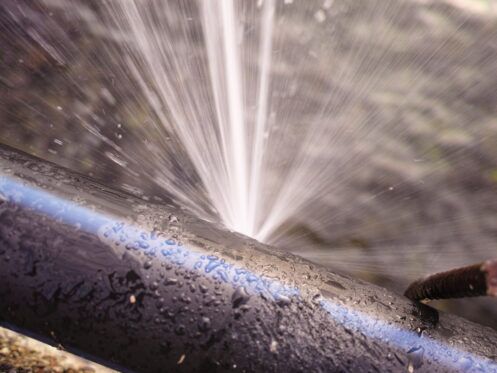Emergency Burst Pipe Services: Fast Response to Avoid Extensive Damage
Emergency Burst Pipe Services: Fast Response to Avoid Extensive Damage
Blog Article
Preventing Burst Pipes: Necessary Tips to Shield Your Pipes
Stopping ruptured pipes is a crucial issue for house owners, especially throughout cooler months when the threat of freezing is enhanced. Executing calculated measures such as proper insulation, regular assessments, and maintaining consistent indoor temperature levels can significantly reduce the chance of pipe failure.
Understand Pipeline Vulnerabilities
Understanding pipeline vulnerabilities is essential for reliable plumbing maintenance and protecting against costly damages. Several factors add to the vulnerability of pipelines to bursts, consisting of material structure, age, and environmental conditions. Older pipes, particularly those made from galvanized steel or polybutylene, usually break down over time, resulting in increased threat of ruptures and leaks.
Temperature fluctuations can additionally significantly effect pipe honesty. In colder climates, water caught in pipes can freeze, exerting and broadening stress on the pipe walls, which may eventually cause a burst. Moreover, high water stress can stress pipes, especially at joints and bends, increasing the likelihood of failure.

Insulate Pipeline Effectively
Proper insulation of pipelines is crucial for stopping cold and succeeding bursts during cool climate (burst pipe). Protecting your pipes system properly safeguards versus temperature level goes down that can result in expensive damage. Begin by determining prone locations where pipelines are revealed to outside temperature levels, such as basements, attic rooms, and outside walls
Use foam pipeline insulation sleeves or cover insulation tape around these areas to offer a protective obstacle. Make sure that all sections of the pipes, specifically those with minimal warmth exposure, obtain appropriate insulation. Pay unique focus to joints and fittings, as these are more at risk to freezing.
When protecting, it's important to pick materials that meet regional building codes and are appropriate for the certain atmosphere. For example, fiberglass insulation is usually recommended for its thermal resistance residential properties - burst pipe. Furthermore, think about making use of warmth cords or tape in severe problems, which can be plugged in to supply additional heat
Regularly examine protected pipelines for any signs of wear or damages, as jeopardized insulation can lessen its efficiency. By taking these proactive measures, you significantly decrease the threat of pipe bursts, guaranteeing a reliable pipes system throughout the winter months.
Maintain Constant Temperature
A steady indoor temperature level is essential for protecting against ruptured pipes during the frigid months. When temperature levels drop, water within pipelines can ice up, increasing and creating pressure that may eventually cause the pipes to ruptured.Using a programmable thermostat can help manage indoor temperature levels efficiently, ensuring that areas with pipes continue to be cozy even when the residence is empty.
Additionally, it is sensible to allow faucets to drip slightly during severe cool spells. This small circulation of water can protect against cold by minimizing stress within the pipelines. During particularly severe climate events, consider momentarily putting on hold any kind of nighttime troubles on your thermostat to keep a steady cozy setting. By executing these approaches, property owners can significantly minimize the risk of pipeline bursts and safeguard their pipes systems against the harsh wintertime components.
Regularly Examine Plumbing
Regular assessments of plumbing systems are critical for protecting against ruptured pipes and preserving total home stability. Throughout these assessments, it is vital to his comment is here examine visible pipelines for signs of rust, leaks, or put on.
Furthermore, checking connections and joints is vital, as these points are frequently susceptible to leaks. Property owners should additionally assess water pressure degrees, as excessive stress here are the findings can strain the plumbing system and enhance the danger of pipe bursts.
Think about scheduling expert plumbing examinations at the very least when a year, specifically before winter months, to guarantee your system is prepared for colder temperature levels. By being proactive in your technique, you can secure your home versus the pricey and disruptive effects of ruptured pipelines.
Know Emergency Procedures
Comprehending emergency situation treatments is essential for every homeowner, especially after conducting routine plumbing inspections. Being prepared for a plumbing emergency can significantly mitigate damages and conserve prices.
Following, maintain essential tools handy. A plumbing emergency situation package need to consist of a wrench, bettor, and towels, as well as a flashlight and a bucket for small leakages. Furthermore, think about having the contact information for a trusted plumbing readily available, needs to the scenario intensify beyond your control.
If sites you detect a leakage or burst pipeline, promptly transform off the supply of water and notify your plumber. Document the damages with photographs for insurance policy functions. Be aware of the indicators of potential pipes problems, such as unusual water stress fluctuations or damp places on walls
Inevitably, proactive knowledge and swift activity are critical in managing plumbing emergency situations, guaranteeing your home stays safeguarded and reducing potential damages.

Final Thought
In final thought, protecting against burst pipelines necessitates a multifaceted method that includes understanding pipe susceptabilities, correct insulation, maintaining consistent interior temperature levels, routine assessments, and knowledge of emergency situation procedures. By carrying out these vital methods, the risk of pipes failings can be considerably decreased, thus making certain the durability and effectiveness of the pipes system. Aggressive procedures not only secure versus potential damage but also add to overall water preservation and the security of home.
In cooler climates, water caught in pipes can ice up, expanding and applying pressure on the pipeline wall surfaces, which might eventually lead to a ruptured. When temperatures decrease, water within pipelines can ice up, producing and increasing stress that might eventually create the pipelines to burst. By implementing these techniques, home owners can considerably lower the threat of pipeline ruptureds and protect their pipes systems versus the extreme winter months elements.

Report this page